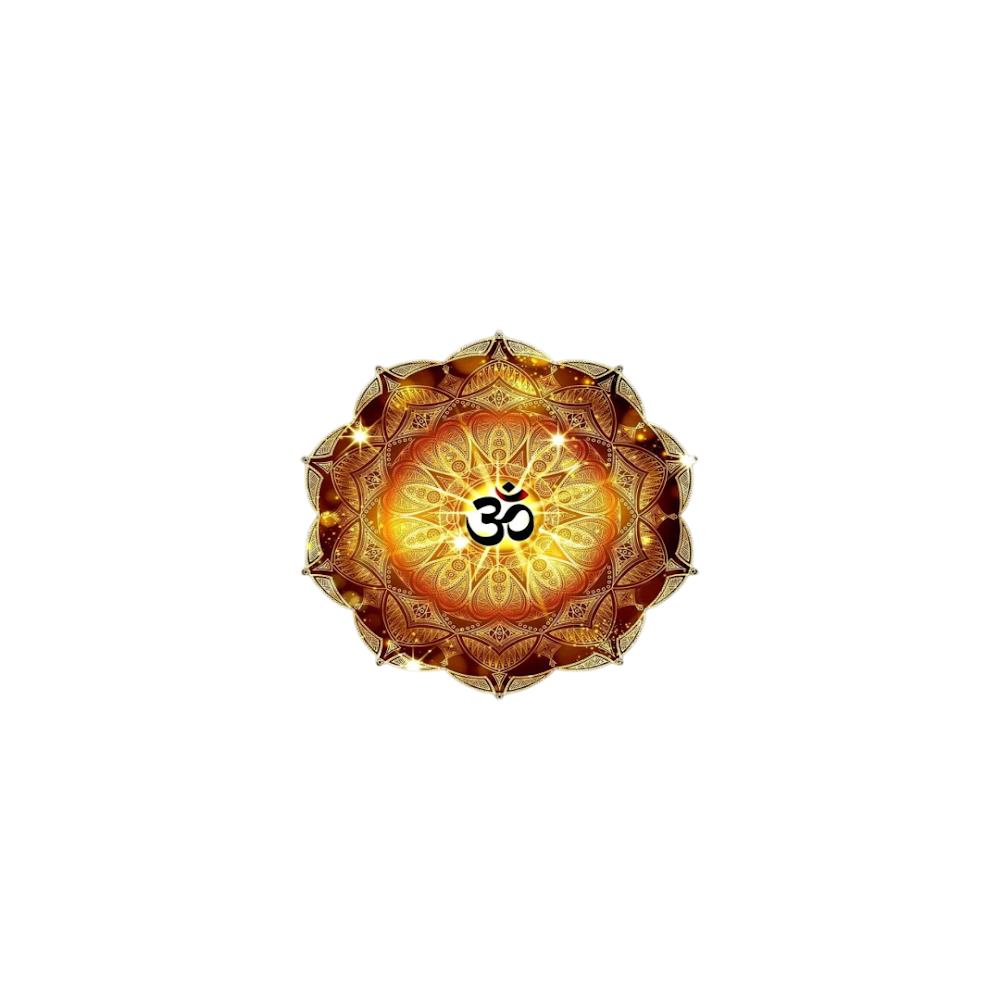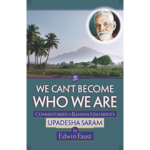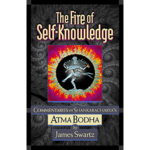Devotion
Love – How is Consciousness Love?
Those who do not understand that self knowledge and love are one often criticize Vedanta as a merely intellectual path, implying that the path of love is superior because it produces states of ecstatic love. We need to mention that because love motivates all conscious endeavors and because all rituals are actually karmas, there is no path of love. Furthermore, we also need to mention that Vedanta is the knowledge behind all paths so it could not be said to be a path at all. However, leaving these arguments aside, Vedanta might reasonably be called a pathless path in so far as it encourages action and action always leads somewhere. In so far as it is a path we contend that it a path of love that leads to the realization that the self is love. This misunderstanding is due to an inability of seekers to connect the idea of the self as consciousness/awareness and the self as love. There is a logical connection: if reality is non-dual consciousness as Vedanta contends and if love existswhich it does…then there can be no difference between love and consciousness.
There is also a simple practical connection. The bridge between them is attention. In terms of the apparent reality, love is willing attention. To say that I love my cat means that I pay attention to it. I feed it, cuddle it and think about it. If I do not pay attention to my husband or wife, he or will inform me that I do not love him or her. Attention is consciousness directed through the Subtle Body toward an object. Because I am always paying attention to something I always love something. Love is not a special state or a special feeling. It is the nature of consciousness, my self. It does not come from objects, though certain objects invoke it.
You may argue that there are many things that you do not love but this is true only because it pleases you not to love a particular object. It pleases you not to love an object because you love your dislikes. Not loving an object because you dislike the object does not mean that your nature is not love. It means that for the sake of yourself, which you love above all objects, you indulge a dislike. Your likes and dislikes, fears and desires do not come from outside. They bubble up from within you. They are born of consciousness, your awareness, as it is filtered by ignorance. Likes are postive love and dislikes are negative love. They are you, but youloveare free of them.
If you say that you do not like your job but remain in it because you need the money, it only means that you love money more than you dislike the job. And you love money because you love yourself. Everything we do, everything we think and feel, is for the sake of the self. We do everything for the self because the self is loved beyond all else.
It is difficult to accept the fact that you do not love an object for the sake of the object because we want to believe that we love unselfishly. But all love is self-ish because there is only one self. The object that you love or dont love is just you, appearing as the idea of an other in your consciousness.
Relationship Love is Based on Duality
The belief that reality is a duality is responsible for the idea of relationship love. It accounts for the sad fact that this form of love is fraught with anxiety. When you are caught in duality, even though the love that you are is fullness itself, you believe that you lack love. Ignorance of this fact causes you to project love on objects. It makes you think that if you possessed a particular objectlets say a personyou would feel complete. The feeling of completeness is the experience of love, your self. The knowledge of your completeness is liberation. It results in an acute appreciation of the fact that I am love.
Passion for an object, particularly a person, is not love even though desire is a form of love. But if you look into it you will discover that when you love someone or something it is your selfthe lovein the object that you love. You do not know that when you contact the object you are only contacting yourself. The object invokes the love that you are. Remember, the joy is not in the objectever! Because of ignorance of this fact, you become attached to the idea that you need the object, usually a jiva of some sort, to complete you. This kind of love is thought to be love but it is ignorance masquerading as love.
Some texts say that the desire to love an object and be loved by an object is the primary cause of suffering because it generates an incessant stream of binding emotions, both positive and negative. Nonetheless, it is not a desire that can be immediately renounced, as it is hard-wired from birth. So it needs to be sublimated, not by demanding and expecting love but by giving it. Giving love is the essence of devotion. It is the simple recognition that by your very presence as consciousness you are offering yourself to the world in the form of your thoughts, words and deeds. It is awareness of the presence of others and their need for love. You do not lose love by loving. On the contrary, your experience of yourself as love grows the more you give. Devotional yoga is also loving the you you think you arethe one that wants lovebecause from the point of view of the self, the actual lover, you are an object too. It redeems the loveless past.
Because every transaction with an object is actually love, owing to the fact that the self is love, how do we account for fear and pain? If the doer, the cognitive person, is ignorant of his or her nature as love, the love will be hijacked by the likes and dislikes and express in negative, often perverted, ways. Inquiry aids devotion because it makes the cognitive person, the Subtle Body, aware of his or her prejudices and biases, likes and dislikes. When you are aware of your projections, they subside and the energy invested in them is converted into devotion; you love yourself more because you have freed yourself of painful emotions.
Who is the Devotee?
The devotee is the jiva, the reflected self, the basic person. Just as the moon depends on the sun for its light, the basic person depends on consciousness for its claim to be a conscious living being. An ordinary worldly jiva becomes a devotee when it recognizes its inviolable relationship with Isvara, pure awareness in the role of the Creator. Devotion is the recognition by the jiva of its total dependence on Isvara. This simple basic person finds itself in a complex ever-changing environment that it did not create and over which its influence is very limited. To succeed, it needs to come to terms with its life by resolving its identity into Isvara. Isvara is the script and the devotee is the actor in the play of life. Because Isvara appearing as the apparent reality is complex, the devotee is required to play many roles. With reference to my mother I am a son. With reference to my children I am a father. With reference to my wife I am a husband. With reference to the man next door I am a neighbor. With reference to the bank I am a customer. The list goes on.
Responding to the demands of Isvara in an appropriate and timely fashion is the duty of a devotee and requires considerable skill. The devotee must be intellectually and emotionally agile, changing roles at the drop of a hat as Isvara presents new situations. A common reaction to the stress of role playing is to withdraw from the world because one does not have confidence to respond in different ways. Owing to the demands of Isvara, a devotee may retreat into a few simple rolesor even a single role that does not require alertness like a hermit. But dropping out is not always possible in this day and age, nor is it necessarily advisable to avoid relationships. Recognizing its connection with Isvara cushions the devotee from the stress of role playing because he or she understands that the roles belong to Isvara, not to the devotee. Playing the appropriate role to the best of ones ability is devotion. You love yourself when you discharge your duty to your self.
Conversion of Emotion into Devotion
Keeping in mind that devotion is not a special path, it is fair to think of devotional yoga as converting emotion born of love for impermanent objects into devotion for the eternal subject, the self. Transforming emotion into devotion requires sustained and persistent commitment to the practice of non-attachment, without which serious devotional progress is impossible. It requires the devotee to abandon craving for the fruits of action and the belief that objectspeople and experiences like romantic love particularlyare a legitimate source of lasting love.
Renunciation confers power, understanding and love. For example, people willingly sacrifice less attractive objects for more attractive ones. When someone addicted to sensuous pleasure discovers the subtler pleasures of the mind, physical objects lose their luster. And when a devotee finds the state of love that is the innermost self, the small personal loves that captivate the heart, pale. As the practice of letting go grows, love grows. Strip away the shallow cravings for romance and excitement that are the hallmark of the unenlightened and discover that your deepest need is the desire to love and be loved. Nothing is more attractive than love, realizing oneness with ones self. When the real object of our desire is unknown, we chase object love, but when we wake up to the self, we understand that we only ever loved the self. We see that our small daily loves are merely faint reflections of the love that is our nature, the love that pervades every atom of the universe. Devotional practice directs our attention to the true object of our affections.
You cannot properly practice devotional yoga without the knowledge that reality is non-dual consciousness/love. With this understanding it is easy to worship yourself. If reality is non-dual love appearing as gross and subtle objectsinanimate and animate thingseach and every transaction with an object provides an opportunity to worship. Since life is nothing but endless transactions with objects, your life can easily become a temple, an offering, a prayer, an appreciation of yourself. It is easy to worship the objects that present themselves to you when you know that they are actually youbecause you love yourself beyond all else. If this idea makes you feel uneasyas if it was a form of arroganceyou have the wrong idea of who you are.
If the non-dual understanding escapes you, however, all is not lost: you can worship dualistically. It may or may not lead to freedom. Religion is dualistic worship: the object of worship and the worshipper are believed to be different. It is worship according to your predominant guna or the guna that is predominant at the time. Unlike the modern spiritual world, which does not appreciate the value of the religious impulse, Vedanta encourages a religious attitude because it is this attitudeexemplified in the karma yoga practicethat instills awareness of Isvara, which makes the jiva objective and harmonizes it and its environment. Your environment, your life, is nothing but Isvara.
Devotion with Qualities
If your Subtle Body, the instrument of worship, is predominantly tamasic, you will believe that the self is a special God or perhaps a spirit being, something other than you. And, because your mentality is primitive you will worship as if you were a child or a slave. You will open yourself to all manner of extraordinary magical beliefs and find yourself thrilled and fascinated by the dark feelings invoked when you visualize demons, devils and ghosts. Fear will be your predominant emotion and you may not be above using satanic practices, casting spells for instance, to bring harm to others. You may love miracles and bizarre rituals. In India there are sects that drink the sacrificial blood of animals to display their devotion. You will probably believe in heaven and hell, interpret scripture literally, and be obsessed with sin. You may have an unholy affinity for cults and be easily manipulated by corrupt priestsor take delight in surrendering yourself to powerful spiritual personalities, allowing yourself to suffer abuse at their hands. You may hate anyone who dares to question your guru or religion. Religious history is replete with examples of the many excesses caused by this narrow state of mind, the Inquisition and fundamentalist Islam, come to mind.
On the other hand, this type of faith tends to be rock solid and allows the devotee to withstand not only the small pinpricks of life but her major crises as well. The conviction that an external God exists is steady, deep and heartfelt.
If your Subtle Body is predominantly rajasic, you will also project some sort of God or spirit figure as an object of worship. Rajas, the projecting power, a restless dissatisfied energy, keeps the mind and emotions perpetually disturbed. It acts like an opaque moving screen, effectively concealing the love that is your nature. This type of devotion is narcissistic and the devotee is not above bargaining with God for power, position and wealth. The idea that material abundance is evidence of spiritual virtue appeals to rajasic people. Rajasic devotion tends to be status and image conscious and such a devotee is not above using it to impress others. Scratch the surface of this mentality and you will find a person more interested in presenting a devotional front to the world than a pure heart to God. Unlike the steady dependability of the dark type, the restless devotee will change religions, beliefs, teachers and practices at the drop of a hat.
Rajasic devotion, unlike the sleepy innocence of tamasic mother-father God worship, is passionate. For rajasic devotion to evolve into sattvic devotion, the devotee must be convinced that knowledge of God, not accumulation of Gods goods, is the true goal of life. Once committed to self knowledge through worship, this devotee becomes a spiritual dynamo and makes rapid progress.
Devotees with predominantly tamasic and rajasic Subtle Bodies do not understand that reality is impersonal; for them everything that happens is personal. Consequently, their view of Isvara is personal, to their detriment in so far as they often find themselves at odds with Isvara, their enviornment.
Sattva, the third strand in the psychic rope and the highest of the three lower stages of devotion, is rooted in awareness, sat. It is the most secure foundation for a devotional life because the sattvic heart is a clean mirror, capable of accurately reflecting Gods image; to see the self reflected in a pure heart is to love the self. Sattvic devotees are blessed with curiosity, intelligence, discrimination and powerful epiphanies. Sattvic devotion is characterized by a strong value for renunciation, dispassion, dedication of action and its results to Isvara, deep attachment to non-dual scripture, love of spiritual culture, unhappiness when the current of love is broken by a worldly vasana, humility, ability to recognize and serve great souls, and rigorous conformity with dharma.
The downside of sattva: because the veil separating the devotee from the self is so thin, the devotee may become spiritually conceited and suffer attachment to purity, goodness, beauty and knowledge, golden chains difficult to break if devotion is to flower into primary devotion, the fourth and final stage. Primary devotion is free of all positive and negative qualities. It is impersonal non-dual love.
Thinking of yourself as a particular type of devotee is not helpful because it fails to take into account the fact that the ultimate purpose of devotion is to dissolve our limited identity into our limitless identity. Devotion destroys the fear that sets up the apparent boundaries between the devotee and his or her true nature. Rather than develop an identity based on the predominant quality, it is better to use the guna model to assess and transform rajasic and tamasic devotional tendencies into sattva, setting yourself up for liberation.
If you beg Isvara for something other than Isvara, it means your vasanas are rajasic. It is fine to ask Isvara for the things you are too incompetent or lazy to acquire on your own, but you need to know that Isvara may refuse your request because it is not in the best interests of the dharmafieldor even your best interest. And even if it is in your interest, Isvara has to work through law of karma to deliver the results you want because the law of karma is Isvara. Because the availability of objects that you might want is limited, or you would not be praying for them, and the desires of others vying for the same result, who in Isvaras eyes are just as important as you, are virtually limitless, you will have to wait your turn. This will not be a happy situation because rajas is the mother of frustration.
Nobody asks Isvara for air because air is not in short supply. If your heart is pure, you will have the good sense to ask Isvara for something that is readily available. Because Isvara is readily available as the self of the devotee and self realization is the fulfillment of all desires, a sattvic prayer would be: Reveal yourself to me.
Prayer is not worship
Prayer is an intelligent use of free will because it takes Isvara into account, but it is not worship. It is not worship because it belies an imperfect understanding of both ones nature and the nature of Isvara, the Creator and giver of the results of action. Prayer is a supplication based on the belief that who one is and what one has is insufficient. But worship is based on the knowledge that Isvara created the devotee in its own image and that everything he or she has is Isvara and is more than enough. Worship is an offering, a settling of accounts with Isvara. But prayer is necessary; for a seeker of liberation, there is only one prayer: remove my ignorance and reveal yourself to me.
Secondary devotion leads to primary devotion. Sattva is the springboard for non-dual devotion. Primary devotion will not develop when the heart is tamasic. Rajas is the way out of tamas. Tamasic devotees believe in Isvara but are too lazy to actually seek Isvara. If the tamasic devotee becomes devotionally proactive and takes up purification regimen, it will generate epiphanies and insights. Eventually, as the devotee experiences the self reflected in a full heart, more and more sattva develops and the desire for self knowledge arises. The desire for self knowledge is the highest form of devotion because self realization is the purpose of human life. You love yourself totally when you do the most noble thing for yourself. The more the self is experienced, the firmer self knowledge becomes. Knowledge of the self is indirect, but inquiry will convert it to direct knowledge, the hard and fast understanding that my nature and the nature of everything is non-dual love.
Devotion is Knowledge and Action
Devotion is knowledge, clear seeing. Devotion is a childlike and intense love of Isvara. It is the recognition of my total dependence on Isvara. Why should I love Isvara? Because everything I value is given to me by Isvara. Devotion is karma yoga, because when I see that my likes and dislikes stand in the way of the vision that everything is Isvara and Isvara is me, I patiently eradicate them. Devotion is a sense of reverence. As my likes and dislikes are effaced, a sense of reverence ensues. It is the wonder that appears when I see the vastness and complexity of Isvara. It is a sense of irony that arises when I see the non-dual whole that I am sitting side by side with the incompleteness that I am not. How can Isvara create an ocean of mercy and beauty and an ocean of ugliness and suffering at the same time? How can Isvara be both day and night, knowledge and ignorance, freedom and bondage? How can there be free will when everything is programmed by Isvara?
Devotion is worship of Isvara. Worship means that you understand that you are who you are by no fault of your own and the world is the way it is by no fault of its own. It is an understanding of the helplessness of everyone which gives rise to compassionate appreciation of everything. You understand that we are all like children that cant help themselves, so the heart goes out to everyone. When the judgments about how life should be cease, love flows and lifts you up. A devotee stops trying to change his or herself or control his or her life and the lives of others. The devotee does not see the self in the creation or beyond the creation but knows that the creation is nothing but Isvara, the self. If some aspect of life is seen to be defective, the devotee understands that Isvara is not defective; only his or her vision is defective. Isvara is not responsible for the evil. The devotee knows that the cruelties that arise from the sense of difference belong to ignorance of Isvara, not to Isvara.
Devotion is Free Will
Devotion is choosing Isvara as the goal. Isvara is not a big individual who decides everything that happens. If Isvara decides everything, then there is no choice whatsoever. All conflicts arise out of choice. If there is no choice there are no conflicts. But we have conflicts every day. This means that there is free will. A sattvic devotee is free to see his or herself as an instrument of Isvaras will. There is very little free will for someone under the spell of rajas and tamas. But dispassion is a characteristic of sattva which separates the devotee from his or her likes and dislikes and makes clear the value of substituting dharma for likes and dislikes. Since dharma is Isvara, the devotee becomes an instrument for Isvara and his or her life blends into Isvara.
Devotion for Isvara is a means for liberation. Karma Yoga is devotion because to practice it you need to have devotion for liberation, Isvaras nature. It is adding value to the world by doing what you do with an attitude of gratitude, which neutralizes your likes and dislikes and prepares the mind for inquiry. But devotion will not set you free unless it is devotion for Isvara, not for security, pleasure and virtue. Devotion is a burning desire for liberation.
Devotion to Isvara is difficult because the devotee needs to live in the world, which implies a certain need for Isvaras stuff. If the mind is occupied with security, etc. it will not contemplate on Isvara, so the security issue needs to be turned over to Isvara, which requires trust. Pure devotion is the firm knowledge, I am protected by Isvara. If we leave the direction of our lives to Isvara, it means we trust and love Isvara. The Bhagavad Gita says the if you turn your life over to Isvara, It will take care of your getting and keeping. We see the same idea in the Bible, Seek to know the Lord and all else will be added unto you. It is absolutely true.
Devotion is contemplating Isvaras qualities. Contemplation is a constant flow of similar thoughts unobstructed by dissimilar thoughts. Wherever you see brilliance and dullness, compassion and indifference, dispassion and passion, discrimination and attachment, forbearance and frustration, restraint and indulgence, devotion and carelessness, forbearance and irritation, fearlessness and fear, the capacity to understand and ignorance, accommodation and selfishness, satisfaction and dissatisfaction, charity and miserliness, beauty and ugliness in yourself or others, you are seeing Isvara. Isvara is everything that is. Understanding the qualities of Isvara allows the devotee to eschew the negative qualities and cultivate the qualities that lead to pure devotion.
Worship of Symbols
When you take the apparent reality to be real, you do not know that you are what you are devoted to. You know there is something more than what you experience and you have a certain degree of love and respect for it, even though it is not clear what it is. So you become devoted to selective objects that remind you of it. Symbols can take us to the self, because the self is always present. It is not apart from you. When we worship a symbol, Isvara works through the symbol to provide the experiences and insights necessary to draw us ever closer to it in love and understanding. So even though you think that Isvara is someone or something other than the symbol, the symbol is actually Isvara too. Any object that invokes the self in the form of love can be used to get love flowing.
Strip every object of its secular meaning and instill it with a divine aura. See your body as Isvara s temple, your home as the house of Isvara, your family as Isvaras family. Consider every spoken word the name of Isvara and every activity, spiritual or otherwise, service to Isvara. Bending, lying or kneeling should be seen as prostration to Isvara and all lights as symbols of self. One should see sleep as meditation and eating as Isvara eating Isvara. In this manner, every object and activity gradually loses its worldly associations and becomes a living symbol of the divine.
When you see a mountain, see it as a symbol of your self. Mountains are good self symbols, because they are relatively eternal. They rise above everything and provide an unsurpassed view. The self is the highest part of our being, jutting above the plains and valleys of our body/mind territory affording us unlimited vision. They are unmoving, like the self. It cannot move because it is non-dual. They are silent like the self, the unstruck sound. When you see a river, see it as your self. Like the self, rivers give life, nourishing everything with which they come in contact. See the sky as the limitless self.
If you favor religious icons see that the deity you worship is compassionate, conscious, peaceful and beautiful. Choosing a deity with these is an indirect way of invoking and recognizing them in your self.
A human being is an excellent symbol of the self. Humans, like everything else, are cast in the image of God, i.e. they reflected awareness. The love light that is awareness shines with particular brilliance in human beings because they are endowed with intellect and are capable of knowing who they are. The worship of humans with discrimination, particularly great souls, is an essential step on the devotional path, because the worshipper is a human being brought into this world and looked after by human beings. Worship of humans purifies childhood hurts and resentments. By loving others you learn love yourself. The worship of others does not mean that you value them more than you value yourself but that you see no difference between them and you.
To the materialist part of the mind, projecting divinity into objects seems to be irrational, but the practice is good psychology. Just as an actress becomes the person she portrays by totally identifying with every aspect of the characters life, the devotee discovers identity with the self through intense identification with the symbol. The more you love your symbol, the more likely it is to produce a vision of the self. Having experienced the beauty of the self, it is impossible not to fall deeper in love and become passionately attached. Because worldly beauties pale in the presence of the self, attachments to objects dry up.
Worship is not a grand gesture like going to church once a week. It is being there for yourself and others when you are needed. It is attending to small needs. See the request as the self asking for worship. Refusal to give is refusal to love yourself, because there are no others. Loving others is a valuable practice because conflicts with others are a major source of agitation. Eventually this practice destroys duality and results in self realization, the understanding that there are no others
Worship of the Formless Self
How can you worship something that has no qualities? By subjecting your mind to the teachings of Vedanta. Anyone can worship objects, but to worship the formless self i.e. to gain liberation, the mind must be prepared. Worship of the self in its manifold forms prepares the mind for Vedanta. Vedanta is the highest form of worship because it is the truth. Isvara is truth. How does Vedanta work? It works by removing the barriers between the worshipper and the object of worship, the self. What are those obstacles except ignorance inspired beliefs and opinions that maintain duality and cause suffering? The devotee offers his or ignorance up to the teaching and gladly accepts the result. When the last shred of ignorance is gone, it is clear that the self is love and that the devotee is non-separate from it.
Questions
(1) Give the two reasons why there is no path of love.
(2) There is both a logical and a practical connection between consciousness and love. What are they?
(3) Why is the self the highest object of love?
(4) Why are negative feelingsjudgments for exampleactually self love?
(5) Why is seeking a love relationship counterproductive spiritually?
(6) If you are in love with someone else, why are you actually in love with your self?
(7) List some of the problems that come from not knowing that you are actually in love with your self when you are in love with someone else.
(8) In addition to karma yoga, what psychological process purifies the negative emotions caused by attachment to objects?
(9) Love causes feelings and actions but it is neither a feeling nor an action. It is pure awareness/existence. If it is pure awareness which stands alone, what is its practical connection to the world of feelings and actions?
(10) Why are negative feelingsdislikesactually love?
(11) When you love someone or something else, why are you only loving yourself?
(12) Wanting love from someone is painful. How can you heal the pain?
(13) Most people think God is some kind of superbeing situated somewhere other than the world. What is Vedantas definition of Isvara?
(14) How does playing the roles Isvara gives the devotee to play amount to devotional love?
(15) Why is it intelligent to become a devotee of Isvara?
(16) What is the connection between devotion and renunciation?
(17) How the devotee worships depends on his or her predominant guna. What primary emotion belongs to each guna?
(18) What are the two basic types of devotion?
(19) How is prayer related to free will?
(20) What is the difference between prayer and worship?
(21) Why should a person be devoted to Isvara?
(22) Why is karma yoga a path of love?
(23) The fact that Isvara creates and controls everything does not mean that there is no free will. What is the proof that there is free will?
(24) What is the most intelligent use of free will for someone seeking freedom?
(25) Why do predominantly rajasic/tamasic individuals find it difficult to surrender to Isvara?
(26) Why does a devotee not need worry if he keeps his mind on Isvara, not on Isvaras stuff, all the time?
(27) If you cant worship Isvara as formless awareness using the teachings of Vedanta, what other option is available and why does it work?
(28) Why are the teachings of Vedanta called formless worship?
Answers
(1)(a) Love motivates all conscious endeavors.(b)All actions done in the name of love i.e. religious rituals are actually subtle or gross karmas.
(2)(a) If reality is non-dual consciousness and if love exists…which we know it does…there is no difference between consciousness and love. (b) when Maya is operating consciousness functions though the subtle body as attention.If consciousness is love then whatever we willingly pay attention to is love.
(3)Because everything we do is for the sake of the self.
(4)Because it pleases you to indulge them.
(5)Because it means that you do not know that your nature is love.
(6)(a)Because reality is non-dual there is no one else.(b) Because they are a symbol of love, so when you think of them, the thought invokes the love that is your nature and you experience bliss.
(7)Anxiety, attachment, anger, desire, depression.
(8)Sublimation, converting the desire for objects into a desire to know the truth.
(9)Attention.Attention is awareness focused on an object.
(10)Because it pleases you to indulge them.They are not love for the object, they are love for the self because you love yourself more than anything.
(11)Because there is only one self.
(12)Practice the opposite thought: give love to others.
(13)Everything that is.
(14)Because it creates a bond with Isvara.Devotion is love of Isvara.Since Isvara appears as the people with whom you have karmic links, your relationships with them are based on love.Love heals desire, which is based on fear.It is the opposite thought that drives out fear.It converts emotion into devotion.
(15)Because as a jiva you are totally dependent on Isvara.You will only reap grief if you are at odds with a benefactor.
(16)Willingness to sacrifice what you want for the sake of others is devotion to Isvara because Isvara is everyone.Letting go of what you want cultivates dispassion, perhaps the most important qualification for liberation.
(17)Fear belongs to tamas.Desire belongs to rajas.Love belongs to sattva.
(18)Guna bhakti, worship dictated by your predominant guna and parabhakti, non-dual self knowledge.Non-dual self knowledge is the knowledge “I am love.”
(19)Prayer is entirely optional and is an intelligent use of free will because it acknowledges the importance of Isvara in one’s life. Without taking Isvara into account the seeker remains completely ego-centered and emotional.
(20)Prayer is asking for something and worship is offering one’s love.
(21)Because everything that we value comes from Isvara.
(22)(a) Because it removes the rajasic and tamasic vasanas that prevent me from loving myself and understanding that my nature is love. (b) because knowing that everything I am and everything that happens depends on Isvara allows me to relax and accept myself and the world without fear.When I relax the love that I am becomes available to me and to others.
(23)That we have conflicts.All conflicts arise out of choice.If there is no free will…as in the case with animals…there is no conflict.
(24) To choose to seek Isvara, and to surrender/trust to Isvara.
(25)Because they are suspicious and unable to trust.Consequently they are willful.
(26)Because Isvara looks after all the devotee’s needs.
(27)(a) Worship of forms.(b) Because reality is non-dual everything is the self.Meditation is a practice a discipline that involves seeing every material and psychological object as a manifestation of Isvara.
(28) Because they remove the subjective barriers separating jiva, the devotee, and Isvara, the Beloved.Through self inquiry, the devotee realizes that there is no separation between him and Isvara.











